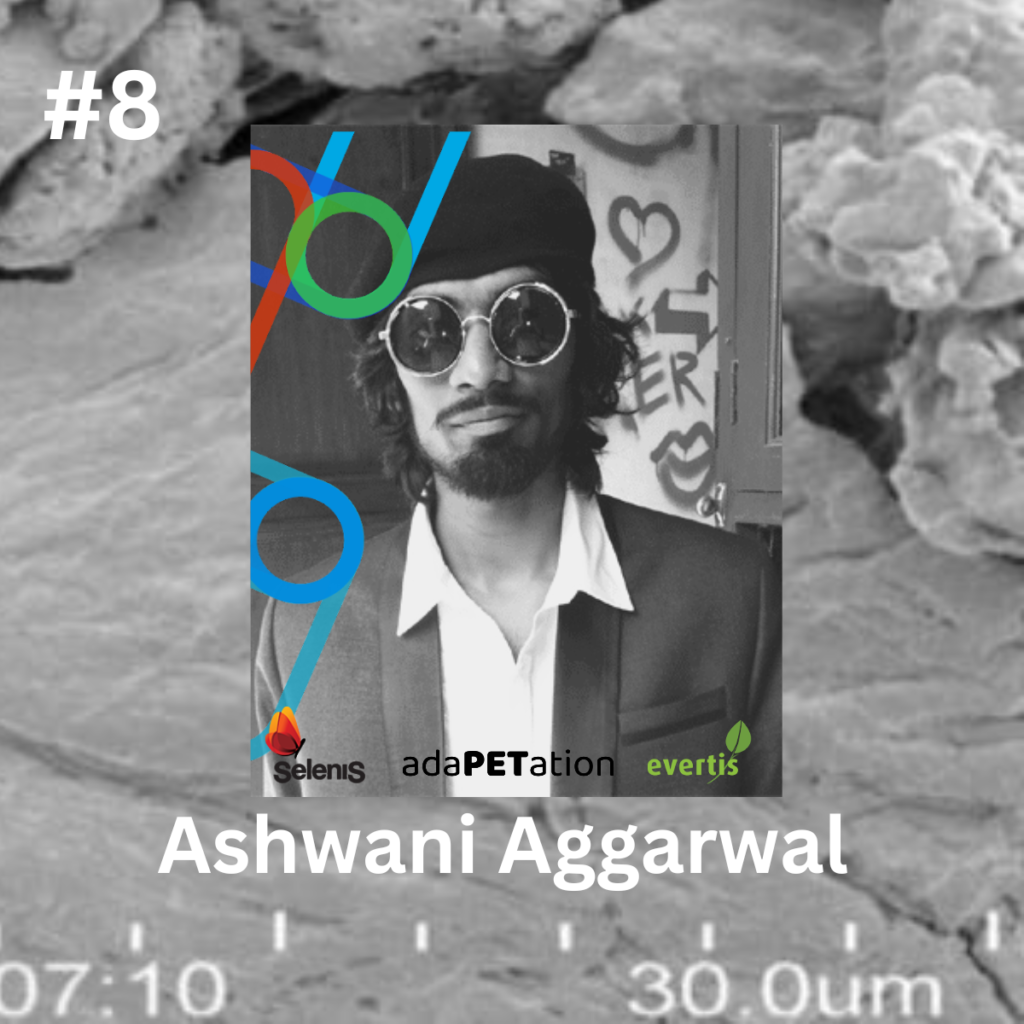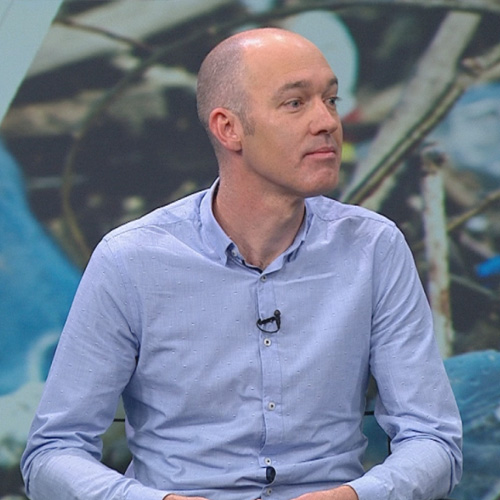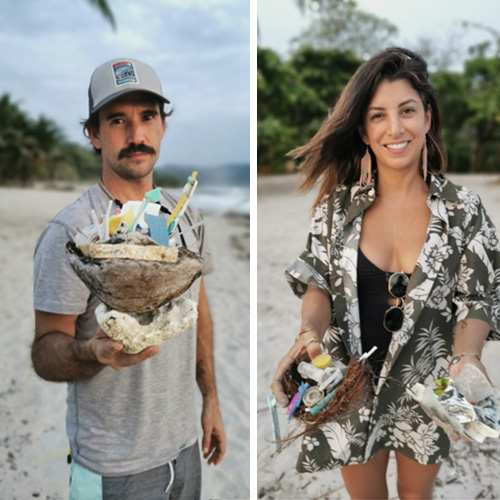
Ashwani Aggarwal’s circular venture, Basic Shit, is converting PET and other plastic waste into public toilets to answer the call of nature and respond to a serious sanitation issue in India.
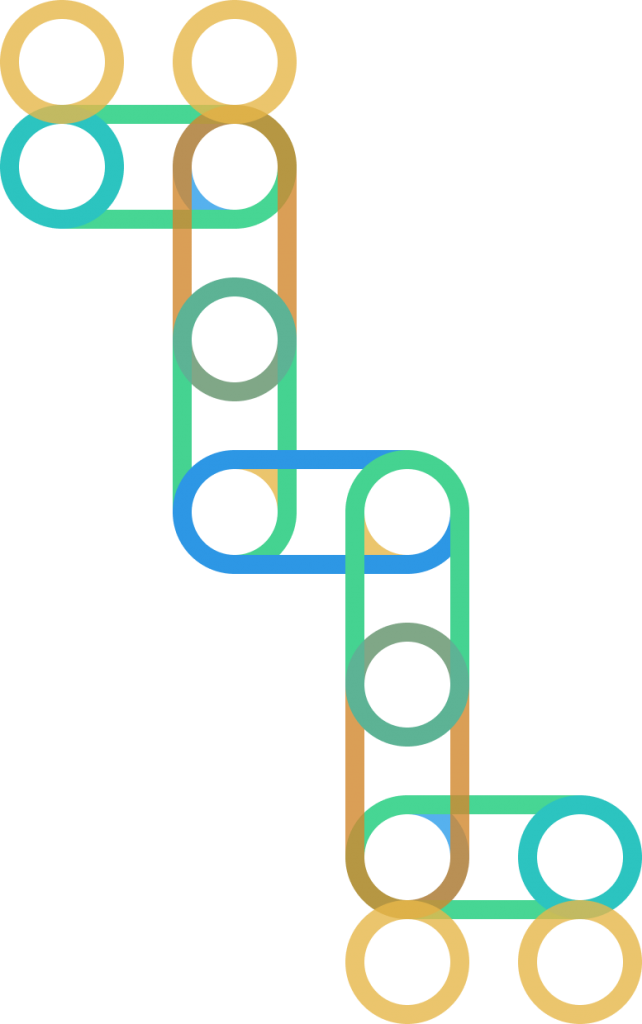
Building a business that gives people dignity when they are “doing their business”, is the goal for Indian systems thinker, Ashwani Aggarwal.
Keeping the poop in the loop and away from polluting the country’s water supply while recycling plastic waste and preventing it from being burned in the sprawling urban metropolis of New Delhi are the admirably, beautiful by-products.
That’s why Ashwani Aggarwal, the founder of Basic Shit, is our eighth and final candidate for PET Heroes 2023. Learn more about his circular solution for India’s sanitation problem in….
FIVE MINUTES WITH ASHWANI AGGARWAL
So how did you got here and how did you end up founding a company to solve some of the sanitary problems in New Delhi?
So basically it started with my college project where I had to do some research on Indian sanitation conditions where I was creating an awareness program looking at what is more important for you, a toilet or TV? This was how I started my campaign, I submitted to the college and after that I thought, there’s some purpose here. So I thought, like, why not? I made my first toilet and started my career in this sanitation industry only rather working for some advertising agency or some newspaper. So from there I thought rather than doing a job why not? I give up a job and increase the sanitation standard in streets with a business where people are cleaning toilets and they’re picking up trash, there’s too many problems on the street so solve them one by one. So this is how it started and I’m still on it. And a lot of times I thought, okay, this is like too much work for me, like I can’t handle it but some incidents always came up that inspired me to work more on this sector.

So, tell us about the problem that you and your team have identified, what problem are you trying to solve and how do you go about doing that?
So the first problem is there’s a lack of toilets on the street. If you go by data, there’s like only one toilet for every 4,000 users. So that number is huge. And if you compare that for women, there’s like 8,000 women for each toilet. So things are really not up to the ratio or proportion we would like. So the solution is to make more toilets. So from this we started working on one problem – the male urination problem – because everywhere if you roam around in India on Uber or cabs, you will see people urinating because they don’t have any place and this is not their fault but there should be some solution. So from there we started to make some DIY urinals and I put it on the internet how to make this urinal because I can’t solve the whole 100% problem myself. So this also inspired us because when we did our first DIY urinals we got a lot of pictures all across India of people making this toilet in Chennai, some housekeeping woman whose home was being urinated on by the public so they made this urinal and they shared this picture with us. I think that’s a very inspiring thing. That’s why like we thought, okay, we are doing something which nobody is thinking about. So that helped to keep on pushing us to do more and we are also working on public spitting as well as public sanitation. We are creating more campaigns so that people get aware of how they should behave in public.
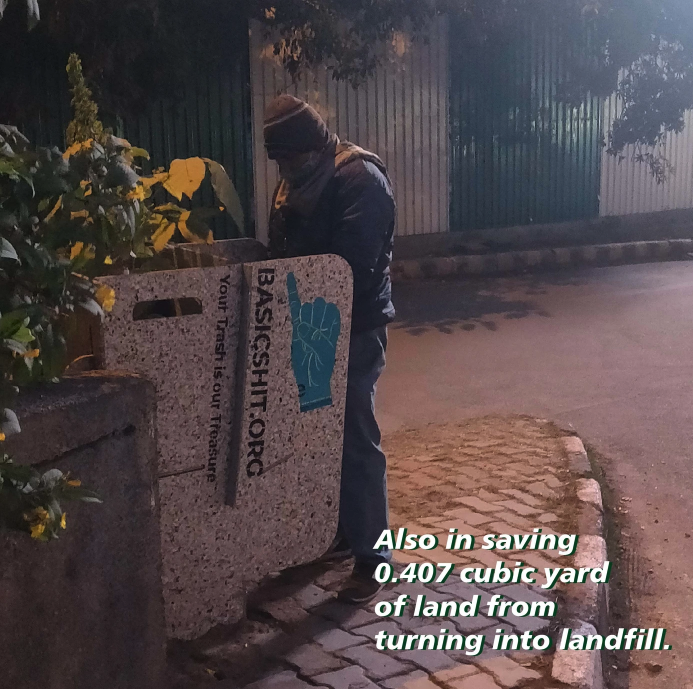
Could you talk about how you also saw another problem, which is the issue of plastic waste and saw how this could be part of your solution. Could you talk a little bit about that and how the two problems of plastic waste and public sanitation came together in one solution?
So it started with the first toilet we put up at the Ames Hospital. It’s one of the biggest hospitals in Delhi. So a lot of people all across India come to this place for their checkup or some medical solution or problem. So I thought, okay, why not start from here? So we got one place, we put one prototype there, and for funding, I collected the money around that area. Only I was like standing at that place, the yellow spot we call where people urinate. And I started asking for, like, Rupees10, Rupees11, so that I could make a toilet there. So we made the toilet and we made it with a little iron, or pieces of stainless steel. And we kept on developing our design. But after some time we realized that steel or recyclable products or materials with more value were getting stolen from our installation because they have some resale value, right. So then we thought of making this toilet with another material. We came up with the material called Honeycomb Paper, and it’s actually a material from which you can make furniture. But the main constraint with this material is when water comes in contact with this Honeycomb panel, they collapse. So it has a limited life and limited time for this toilet which exists. So then we thought, why not make this toilet from the trash so that they don’t have resale value and nobody will break them. So in the first experiment we did in our studio, we just took a lot of this plastic crushed in some mixer grinder, and then we compressed it with heat between two plates and we made one material. Then this material gave us confidence. Okay, now we can make this in four bigger sizes. Then we started contacting different plywood manufacturing companies in India, and we started talking with them about how we can make this panel like you’re making. Same thing with wood chips but with plastic. Why not? If we give them plastic chips can you make this possible? So we did this R&D sending this like material to different plywood manufacturers. They made some samples, they sent it to us and the result was phenomenal. And then we started doing some tests around this material about their toughness properties, screw taking capacity and different tests. Fire test and we make sure, okay, this material is okay to go to make some like installation. Then we started making some like small urinals for male and we started putting them up in public and they still exist and they are designed in such a way they need less maintenance. I think that’s the biggest thing which we cracked, because if you make any toilet, if they need maintenance, you need a person to clean it. So that actually makes the whole chain very expensive and this kind of project doesn’t exist. So less maintenance was the like plan and it’s like a. We put it in plastic and it’s working.
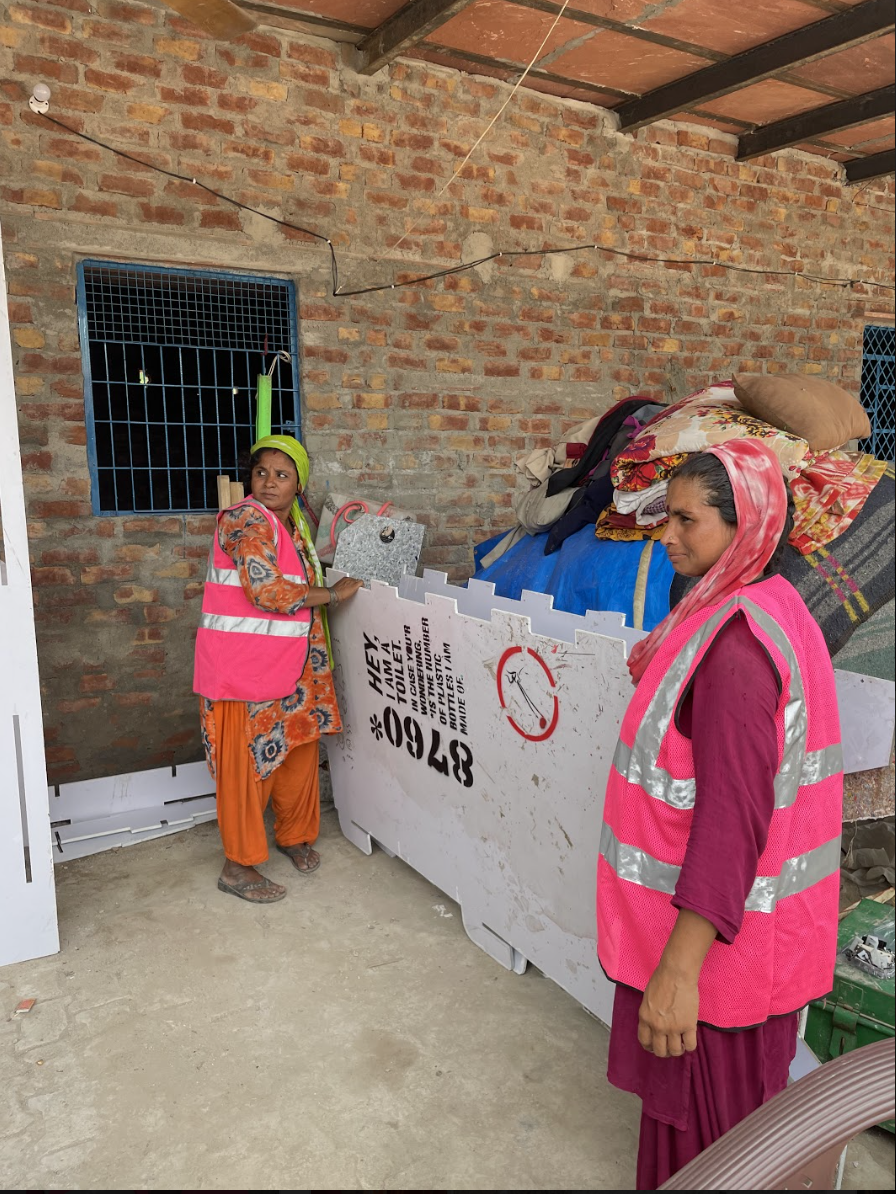
So where do you source the plastic from and which kind of plastic is most readily available for this particular solution?
So right now we are using it to make this sheet like multilayer plastic and mostly plastic pieces like chip packets or different packaging. Plastic comes under the same category number seven and we make SGP also into it. So it’s like making this board is like if I come to the shot, like making tea, you have to mix like two or three kinds of plastic and this sheet is getting made. So it’s very simple. It’s just like heat and pressure. These sheets are made from compressed plastic and that’s why this material has a plywood kind of property. So this is how we made the material with HDPE, #7 and #1, PET from bottles.

And how many of these toilets or spitting bowls or facilities have you created?
So right now these urinals, we are like only putting up on the ring road. Delhi is a city with circular shape, so it has two roads, major roads, one inner ring road and outer ring road. So we thought we would focus on these two roads because these are major roads, like anybody who comes to Delhi has to pass through these two roads. So we are only like every 200, 300 meters like we’re putting one urinal. So until now we managed to install 25 of them. So right now we are struggling with funds. We’re doing the majority of this project bootstrapping and from crowdfunding campaigns. So as we are getting some funds, we’re putting in more toilets and the future plan is to make female urinals that we are doing right now. We made a couple of designs. Right now they are still in our studio because putting women’s toilets into the street is like another set of tasks. We are like figuring out how to go about it and put this like woman urinal because that those are the people, those are the like humans or women’s who are like really need of urinals, Like by interviewing women around the street we learned that they stop drinking water because if they drink water, they have to find the toilet. So they are not drinking because they don’t have to go to the toilet. So that’s a big problem.
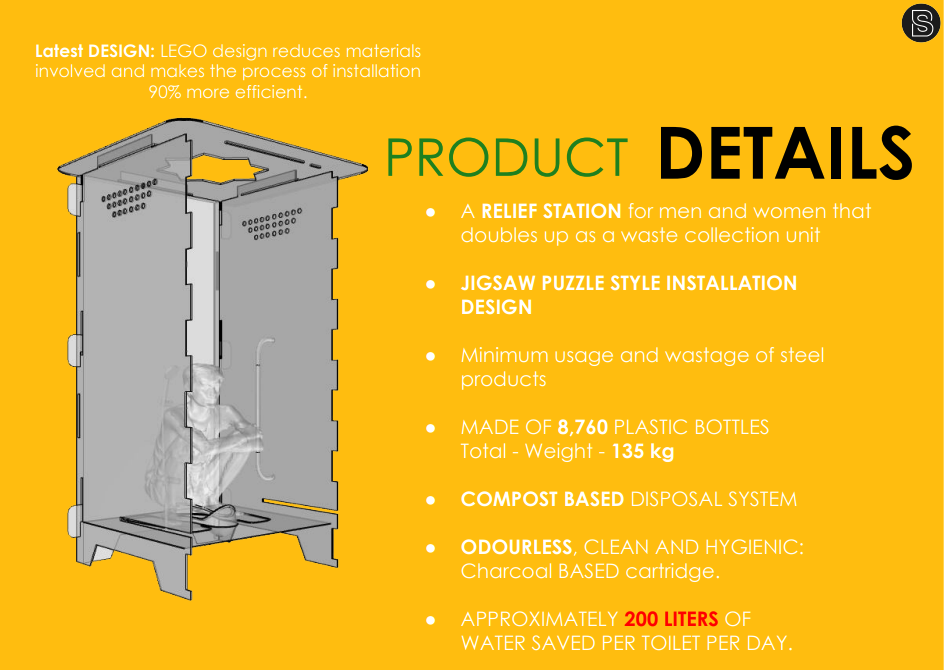
You raised money for the first one just standing outside the hospital and asking for money. How has that tactic evolved? How much does each one of these toilets cost and how do you raise the funds to pay for these now?
So the first design I made, I just like it was a very basic DIY kind of setup, but it needs some money. So I need it for like Rupees10,000 to make seven of them. So I made it this design by taking money from the users only. So whoever came at that spot to urinate, I was telling like, okay, tomorrow I will make a urinal here. You give money and it will be better. Some money or some contribution today. So I have a donation box with me. My friends are around me. They are like convincing them, okay, we have an idea. We can do something about it. Some of them like to refuse, some of them gave money. So then we go on. Then we introduce with some like nearby some politician he like listen to our pitch and he said like, okay, how much you collected? I said, like two or 3000. He said, like rest. I will give it to you the next day. So we put the toilet the next day and he gave the rest. So actually that gave us some confidence. If you actually want to change something, you just need to connect the dots. And he also thought, okay, because he knew this was the problem and we solved it. So I think this was a win-win situation for both of us. That’s why this project is still like I’m on a mission to solve this public urination problem. So our thing is like every 400 or 200 meters we have to put one toilet for male and females.
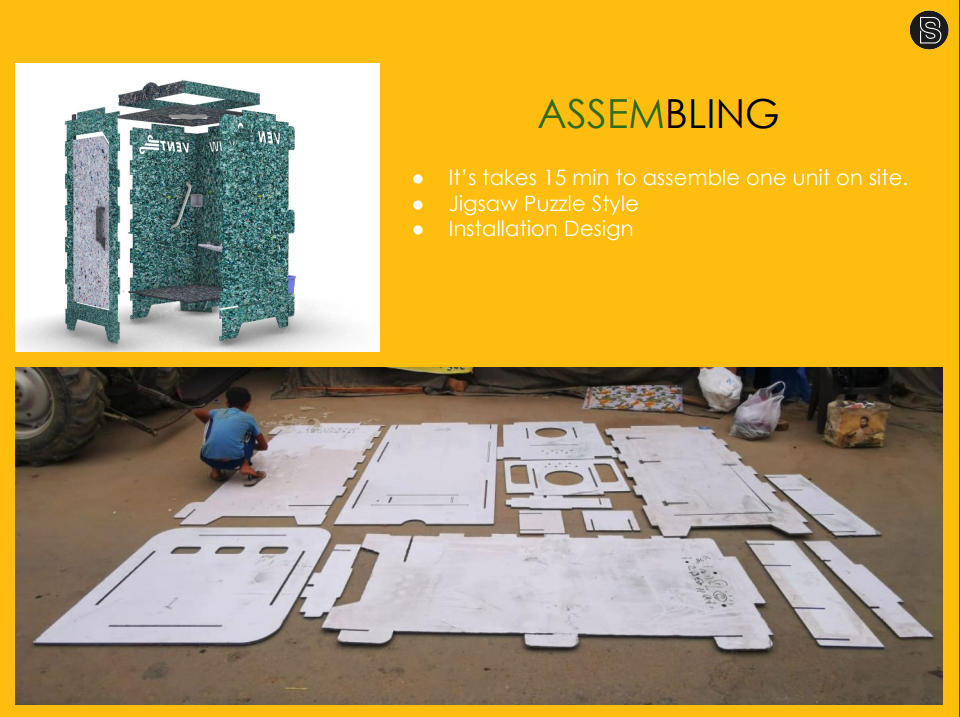
How many is that in total?
We have different designs. So right now we keep changing the design. So now I think the public urination design, we are like stalled. That’s why the number is 25. If you compare all the designs I’ve made, like 700 of different designs around India because I’ve been working on this issue for seven years. The music festivals are our playground. We test our prototypes there and then after applying into some music festival or gatherings, then we bring these designs to the street. So we test these things at different music festivals. Then we bring them to the streets. So it works like, like this you have food miles, so there’s like design miles also.
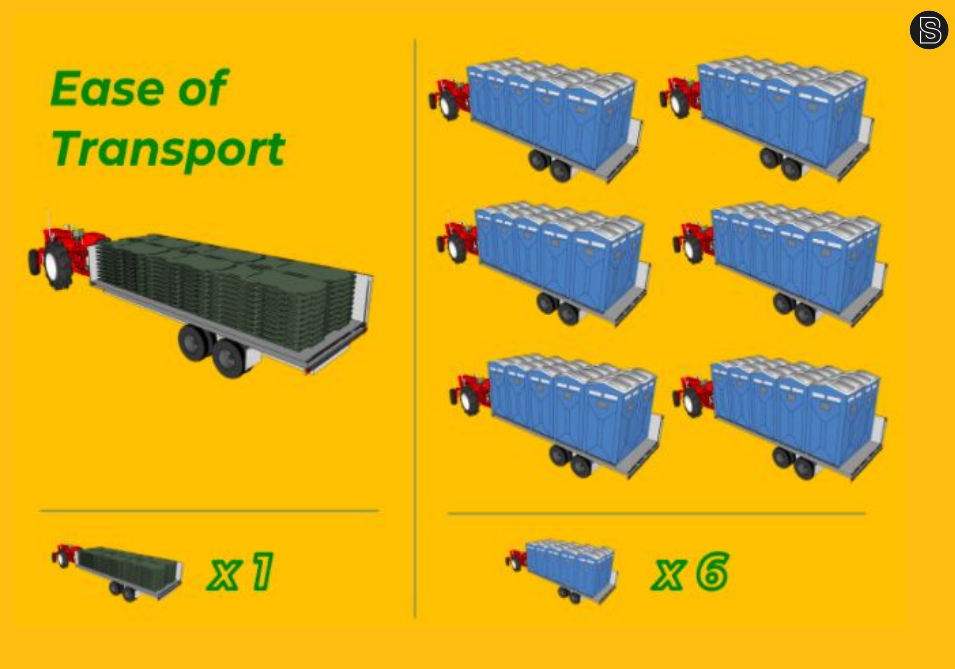
So you also service the festivals? How, how does that work? How many festivals have you now participated in? How many toilets have you produced for that particular audience?
So in 2019, we did one of the major festivals in India. It’s in Arunachal Pradesh. So the reason we got this deal, because our natural is very far and very outskirt of India, like a lot of like less trains and transport is there to take things. So our toilet works best because you can flatpack it, you can dismantle it, you can assemble it in 15 minutes. So the cost thing, which all this toilet rental business is giving, it’s like much less for our design. So that’s why this will break down. And we managed to get this festival to use our toilets for around 5,000 people. We put up around 25 units in this festival and everything was fine. We saved around three tons of water. We made this whole setup with two tonnes of plastic waste. So we actually saved like with one festival, we saved two tons of plastic getting burned into the environment and we saved like three tons of water from this like one single festival. So we have done like seven or eight of them in the last three years but the last two years Coronavirus came and this whole festival business came down. Now we are again generating these festival leads and getting prepared to do more festivals in India.
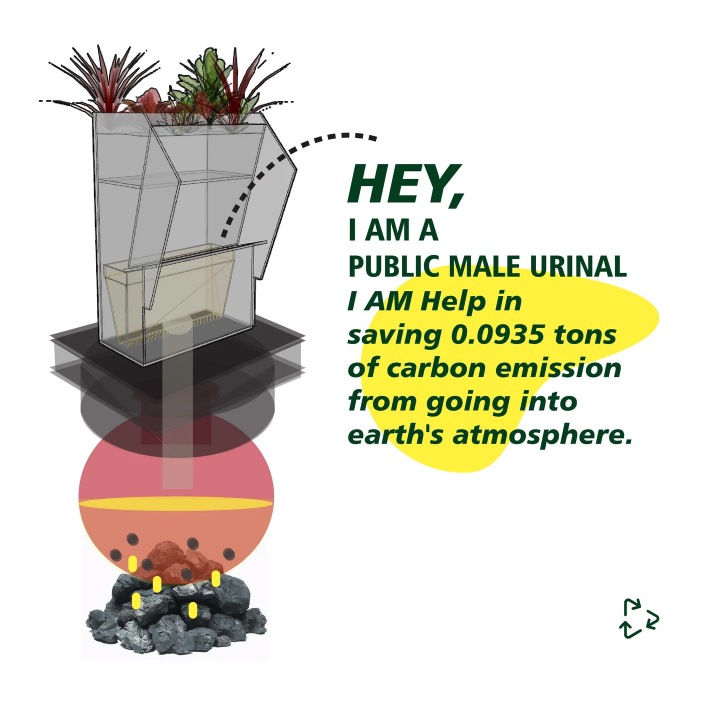
So the toilets don’t use any water at all?
So the technology is like this. I love traveling and I love to travel and document all the toilets where I go. So before lockdown I will have a trip to this Ladakh there I find this like dry toilet. So the thing is, this technology is very old and very traditional. So we just took this technology and their exercise, their research, and we made it like a sawdust dispenser in our toilet because after you do your business, like in a normal toilet, you flush it with the water. The water is just to like. Push down the human excreta to the sewage line. So in a dry toilet you flush it with sawdust. So we made this dispenser like a complex, disciplined dispenser. If I’m like, if I have to say like this. So you pull down the lever and sawdust, fall on this human excreta. So this sawdust plays a very important role. If you see it in a microbe level after it, it creates a shell around the human excreta. It takes away all the water and harmful pathogens and microwaves. And it helps it to decompose quicker and it goes into the soil again. So we don’t like doing this foolish thing of mixing human excreta with water and putting it into the sea, which then the sewage water will go into the river and then we have to segregate this human waste from the water. So that actually this is the problem which needs to be solved.
So what obstacles and challenges do you currently face in being able to offer this solution at scale?
I think the challenge is more about awareness if you like. At this point the business is getting around like 5 to 6 leads per day and it takes a lot of information to tell them about this dry toilet technology. First, if we clear up the dry toilet thing, then there are a lot of questions about the new material. If it’s fireproof, if its weatherproof, a lot of other questions. So sometimes I think that if people are well educated about the problem, then it is easy to convince them and crack the deal. But like for some people they don’t have that much time to take that much information. I think like there we are losing people because right now people don’t have time. They need just the solution which is available in the market and they don’t care about water. I think this dry toilet technology is for the future when water does not not exist. We are coming here too soon. But I think it’s better like it’s hard to sustain, but like we are trying and finding places where actually there’s like no water. So for example, the new installation we did near Kittila, it’s like in the river bank, Yamuna River Bank. A lot of refugees came from Bangladesh here and staying here because there’s no place there, some border problem, so. They used to bring drinking water from very far away. So the toilet needs less water but we told them about our technology, this dry thing, and we said like you don’t have to bring water also for the flush. Then they understood our solution and they started using it and they are happy to use this toilet because they don’t have to go very far to bring the water. It just needs sawdust, which is like getting from the neighborhood where some wood work is happening. So we are also recycling this like wood waste, which is like getting so a lot of, I think circular economy. A lot of people talk about this circular economy. If you find something which is getting waste, you try to bring it into the circular. That’s why we are like putting more and more things into the circle and solving like two or three problems at one time.
VOTE FOR ASHWANI AGGARWAL
Want to show your support for the amazing work being done by Ashwani Aggarwal? Take a minute to show your support for him and Basic Shit.
NOMINATE YOUR PET HERO
Tell us what you think of our list of PET Heroes 2023 and recommend inspirational leaders coming up with the best solutions to systemic issues surrounding plastic.
Share it
The Other PET Heroes & Useful Links
THE HISTORY OF PLASTIC
Throughout the history of plastic, PET has been crucial in keeping food fresh with lightweight and durable packaging solutions that have helped reduce food waste for almost a century. Learn all about the invention of plastic and the important role it has played feeding people and saving the lives of humans and elephants in the adaPETation® timeline of the history of plastic.

